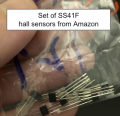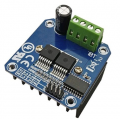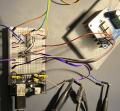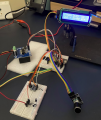I'm convinced you're right, but I need to elaborate on your observation a bit, I'll think about it.You understand correctly. So Dyson would likely drive the motor with an increasing voltage (achieved using PWM) and Hall-triggered increasing frequency as the speed ramps up, as shown in post #66.
The point is that I don't understand, seeing how it is built, why it shouldn't work simply by controlling the frequency without the introduction of the hall sensor.
Before doing anything else, I would like to try supplying more current (not too much, maybe reach 10A) with the current configuration, and see if the possible frequency goes up.
But first I have to find another power supply, unless I put two in parallel...
About this latest point: reading around I find conflicting opinions on putting power supplies in parallel to increase the current - it seems to me that there are those who say "absolutely not!" and those who say "you definitely can!".
Then there are those who say that you have to be careful, but that you can do it and who seem to me to be the most credible.
For example:
This one tell that you need to put one in Constant Voltage mode and others in Constant Current mode
https://edadocs.software.keysight.c...ble of CV/CC,of the individual power supplies.
These others tells about resistors in between:
https://electronics.stackexchange.c...ow-to-design-a-parallel-able-lab-power-supply
https://www.accelinstruments.com/Applications/TS200/Waveform-Amplifier.html (chapter More Output Current)
Here talks about diodes... but seems to me that does not suggest to try
https://www.eevblog.com/forum/beginners/hooking-up-two-24-vdc-power-supplies-in-parallel/
I am also thinking to get some old PC power supply able at least to provide 10A.





















